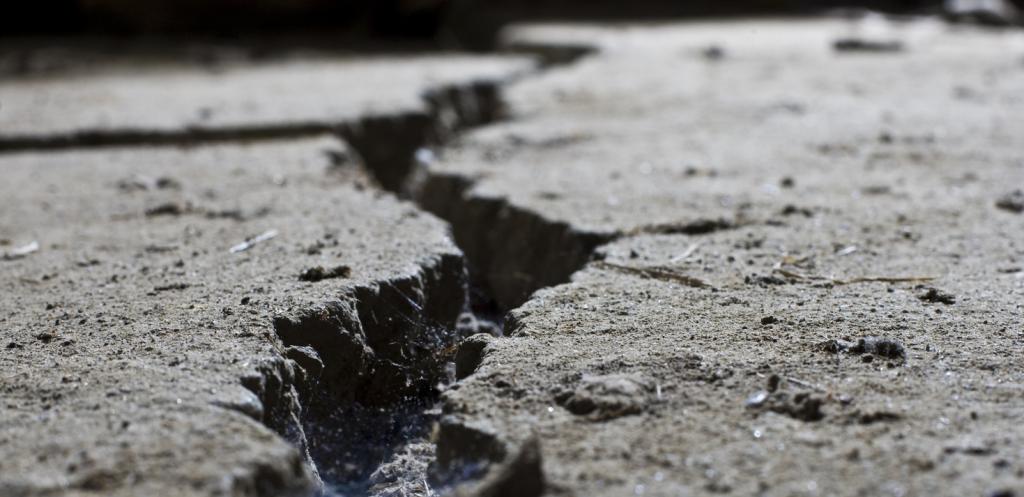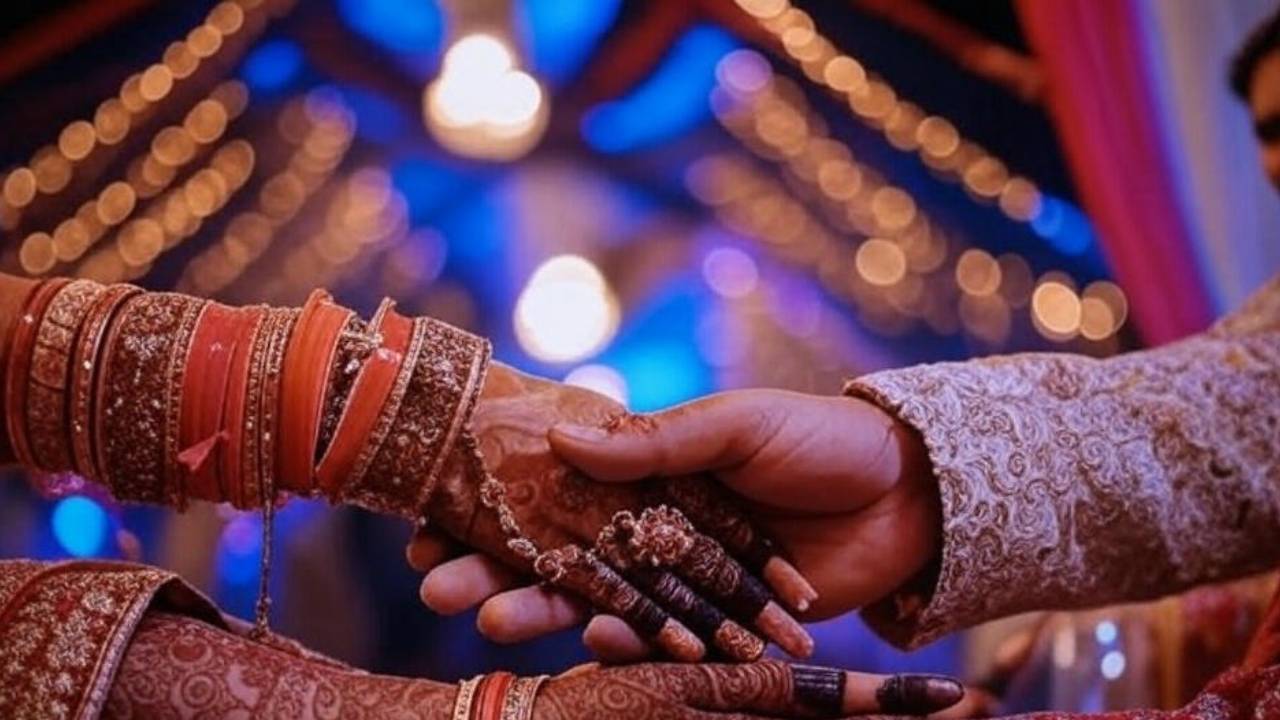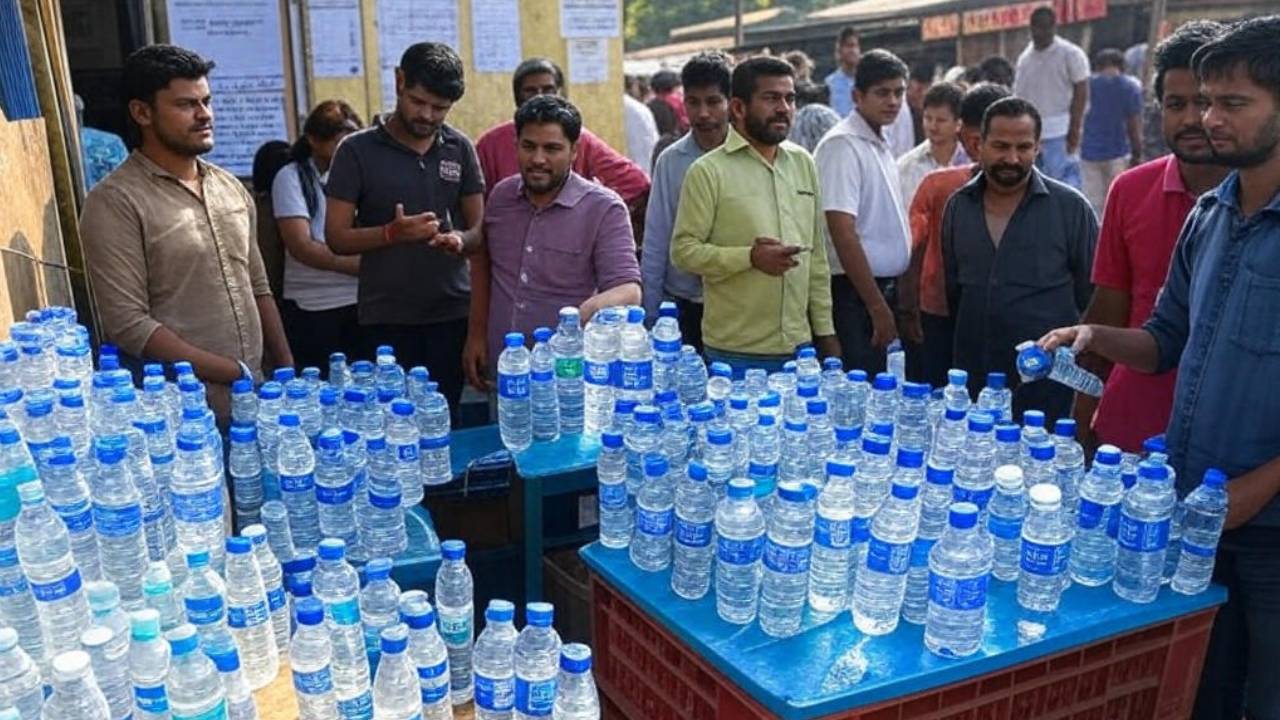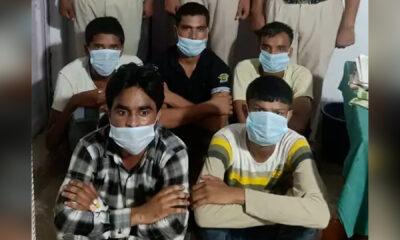india
Earthquake of 3.1 magnitude in Faridabad: Tremors in Delhi-NCR
3.1-Magnitude Earthquake shook Haryana’s Faridabad, felt in Delhi and NCR. No reported casualties or property damage.

On Sunday, a seismic event measuring 3.1 on the Richter scale jolted Faridabad in the state of Haryana.
The earthquake’s effects were perceptible in the national capital, Delhi, as well as in the encompassing regions of the National Capital Region (NCR).
According to the National Center for Seismology (NCS), the earthquake transpired at 04:08 pm, originating from an epicenter approximately 9 kilometers to the east of Faridabad and at a depth of 10 kilometers beneath the Earth’s surface.
As of now, no immediate reports have surfaced concerning any loss of life or damage to property.
india
30-Year-Old Mother Converts and Marries Class 12 Boy
A 30-year-old woman, already a mother to three young children, recently made headlines when she converted her religion and tied the knot with an 18-year-old Class 12 student.

A 30-year-old mother of three embraced Hinduism and exchanged vows with a Class 12 student during a temple wedding in Amroha, Uttar Pradesh, on Wednesday, according to police reports.
Hasanpur Circle Officer Deep Kumar Pant revealed that the woman, now called Shivani, was earlier known as Shabnam. Orphaned with no surviving parents, she has walked down the aisle twice before this latest chapter.
Uttar Pradesh operates under a strict anti-conversion law, the Uttar Pradesh Prohibition of Unlawful Conversion of Religion Act, 2021, which forbids religious shifts through coercion, trickery, or fraud.
Authorities are digging into the details of this recent marriage, though no formal complaints have surfaced yet, police noted.
Per the circle officer, Shivani’s first marriage was to a man from Meerut, but it ended in divorce. Her second husband, Taufiq from Saidanwali village, became disabled following a road accident in 2011.
A Community Divided
News of the wedding spread like wildfire, and reactions poured in. Some neighbors see it as a beautiful testament to love’s power, defying age and societal norms. “Love doesn’t check birth certificates or family trees,” one local quipped. Others, however, aren’t so sure. Whispers of disapproval echo through the town, with some questioning the ethics of a 30-year-old mother marrying a student still navigating his teenage years.
The woman’s first husband, understandably shaken, has filed a complaint with the police. He alleges that his wife was coerced into the conversion and marriage—a claim the authorities are now investigating. Meanwhile, the young groom’s family has stayed tight-lipped, leaving the public to piece together the puzzle.
Police Step In
The Muzaffarnagar police have launched a probe to get to the bottom of this tangled tale. Was it a love story written in the stars, or something more complicated? Officers are speaking to both families, gathering statements, and sifting through the details. “We’re looking into all angles,” a police spokesperson said, promising clarity soon.
For now, the couple is keeping a low profile, likely aware of the storm brewing around them. Their story has even caught the eye of right-wing groups, who’ve raised concerns about religious conversions—an issue that often stirs strong emotions in the region.
india
How Trump’s Tariffs Are Unexpectedly Strengthening India-China Ties
In a surprising twist, the latest wave of tariffs imposed by U.S. President Donald Trump is bringing India and China closer together, reshaping their economic relationship amid global trade tensions. As of April 9, 2025, Trump’s aggressive tariff hike—pushing duties on Chinese goods to a staggering 104%—has sent shockwaves through international markets. But rather than […]

In a surprising twist, the latest wave of tariffs imposed by U.S. President Donald Trump is bringing India and China closer together, reshaping their economic relationship amid global trade tensions. As of April 9, 2025, Trump’s aggressive tariff hike—pushing duties on Chinese goods to a staggering 104%—has sent shockwaves through international markets. But rather than driving a wedge between the two Asian giants, this move is fostering an unlikely partnership that could redefine their future.
A New Alliance Takes Shape
With the U.S. slapping hefty tariffs on Chinese imports, Beijing is feeling the heat, prompting a strategic pivot toward its neighbors. India, long seen as a competitor, is emerging as a key ally. Experts suggest that China’s need to diversify its export markets has opened doors for collaboration with India. From shared manufacturing ventures to joint efforts in technology and pharmaceuticals, the two nations are finding common ground. “This isn’t just about survival—it’s about building a stronger economic bloc,” says a trade analyst familiar with the shift.
Why Now?
The timing couldn’t be more critical. Trump’s tariff escalation, effective from midnight on April 9, has left China scrambling to offset losses. With the U.S. market becoming less accessible, China is turning to India’s growing consumer base and industrial capacity. Meanwhile, India sees an opportunity to boost its own economy by partnering with China, rather than competing head-on. This mutual benefit is sparking discussions about long-term trade agreements that could rival Western dominance.
The Human Impact
For everyday people, this shift means more than just trade stats. In cities like Mumbai and Shanghai, small businesses are already feeling the ripple effects. Indian textile makers are teaming up with Chinese suppliers to cut costs, while Chinese tech firms are exploring India’s skilled workforce to set up new hubs. Families in both countries might soon see cheaper goods and more job opportunities, though some worry about the risks of over-reliance on this newfound partnership.
Challenges Ahead
Of course, it’s not all smooth sailing. Historical tensions and border disputes between India and China linger, casting a shadow over this budding alliance. Critics argue that economic cooperation could strain if political differences flare up again. Still, the current economic pressure from Trump’s policies seems to be outweighing these concerns—for now. Both nations are cautiously optimistic, with leaders hinting at high-level talks to solidify their plans.
A Global Game-Changer?
This evolving India-China relationship could have far-reaching implications. As the U.S. doubles down on protectionism, the two Asian powers might lead a charge toward a new trade order. Whether this partnership holds strong or crumbles under pressure, one thing is clear: Trump’s tariffs are pushing India and China to rethink their strategies—and their rivalry. Keep an eye on this developing story, as it could reshape the global economy in ways we’re only beginning to understand.
Karnataka
Shocking Revelation: 72% of Bottled Water in Karnataka Deemed Unsafe or Substandard
Imagine reaching for a refreshing bottle of water, trusting it’s safe to drink, only to find out it might be hiding harmful contaminants. That’s the unsettling reality uncovered in Karnataka, where a recent investigation by the state’s Food Safety and Drug Administration has exposed serious concerns about the quality of bottled water. In a special […]

Imagine reaching for a refreshing bottle of water, trusting it’s safe to drink, only to find out it might be hiding harmful contaminants. That’s the unsettling reality uncovered in Karnataka, where a recent investigation by the state’s Food Safety and Drug Administration has exposed serious concerns about the quality of bottled water. In a special campaign launched in February 2025, officials collected 296 samples from across the region. Of the 255 samples analyzed so far, a staggering 72%—or 183 bottles—were flagged as either unsafe or of poor quality. This alarming statistic has left residents questioning the safety of a basic necessity they rely on every day.
The Numbers Tell a Worrying Story
Out of the tested samples, only 72 were deemed safe for consumption. Meanwhile, 95 bottles failed safety standards due to dangerous chemical or microbial contamination, posing real health risks. An additional 88 samples didn’t quite meet the mark either, classified as substandard because of low mineral content or other quality issues. With analysis still underway for the remaining samples, the full scope of the problem could grow even larger. Karnataka’s Health and Family Welfare Minister, Dinesh Gundu Rao, didn’t mince words when he shared the findings with the press, calling the situation “deeply concerning” and “unacceptable.”
What’s Lurking in Your Water?
So, what exactly is tainting these bottles? According to the minister, the unsafe samples contained a mix of chemical pollutants like pesticide residues, fluoride, and excessive levels of total dissolved solids (think calcium and magnesium). On top of that, microbial contamination—such as bacteria—was detected, adding another layer of risk. Even the substandard samples, while not immediately hazardous, fell short of expectations due to insufficient minerals, which could still affect long-term health. It’s a wake-up call that not all bottled water is as pure as the labels might suggest.
Cracking Down on Culprits
The state isn’t sitting idle. The Food Safety and Drug Administration is gearing up to take action, starting with collecting legal samples from bottled water companies. Once the evidence is in hand, they plan to file cases against manufacturers found guilty of supplying subpar or dangerous products. “We’ve only taken survey samples so far,” Minister Rao explained. “But now, we’re moving to legal samples to hold these companies accountable.” This step signals a broader push to clean up the industry and protect public health.
Beyond Water: A Wider Food Safety Mission
This bottled water scandal is just one piece of a larger effort by Karnataka’s health officials. In March alone, they analyzed over 3,200 food samples, including paneer and ghee, to root out unsafe products. For instance, out of 32 tested paneer samples, two were unsafe, while six out of 49 ghee samples met safety standards so far. The state’s mission? To ensure that everything from your drinking water to your daily snacks meets the highest quality benchmarks.
What This Means for You
For Karnataka residents—and anyone who trusts bottled water—this news is a stark reminder to stay vigilant. While the affected brands haven’t been publicly named yet, the minister hinted that some well-known names might be involved. Until more details emerge, it’s worth double-checking the source of your water and keeping an eye out for updates from the authorities. After all, when it comes to something as essential as water, you deserve to know it’s safe to sip.
A Call for Change
Minister Rao emphasized that this isn’t just about punishment—it’s about prevention. “Our goal is to raise awareness and improve food production quality,” he said. By cracking down on violators and educating the public, Karnataka’s health department hopes to turn the tide on this troubling trend. For now, though, the message is clear: that bottle of water in your hand might not be as trustworthy as you think. Stay informed, stay cautious, and let’s hope for cleaner, safer options on the shelves soon.
-

 india2 years ago
india2 years ago“Major Crash of Sukhoi Su-30 and Mirage 2000 Fighter Jets in Madhya Pradesh”
-

 Sports2 years ago
Sports2 years agoWFI meetings on April 16, elections likely to be discussed
-

 india1 year ago
india1 year agoPM Modi Meets Deve Gowda for Seat Sharing Talks
-

 india1 year ago
india1 year agoBengaluru: False threat to bomb Raj Bhavan
-

 india2 years ago
india2 years ago“AIMIM to Contest 50 Seats in Upcoming Telangana Assembly Elections”
-

 Entertainment1 year ago
Entertainment1 year agoAnant Ambani: Controversy at the Ambani Pre-Wedding Bash
-

 Entertainment2 years ago
Entertainment2 years agoRajinikanth is Moideen Bhai in ‘Lal Salaam’
-

 Videos2 years ago
Videos2 years agoBidar News : Press Meet Organized By Zilla Kannada Sahitya Parishad















